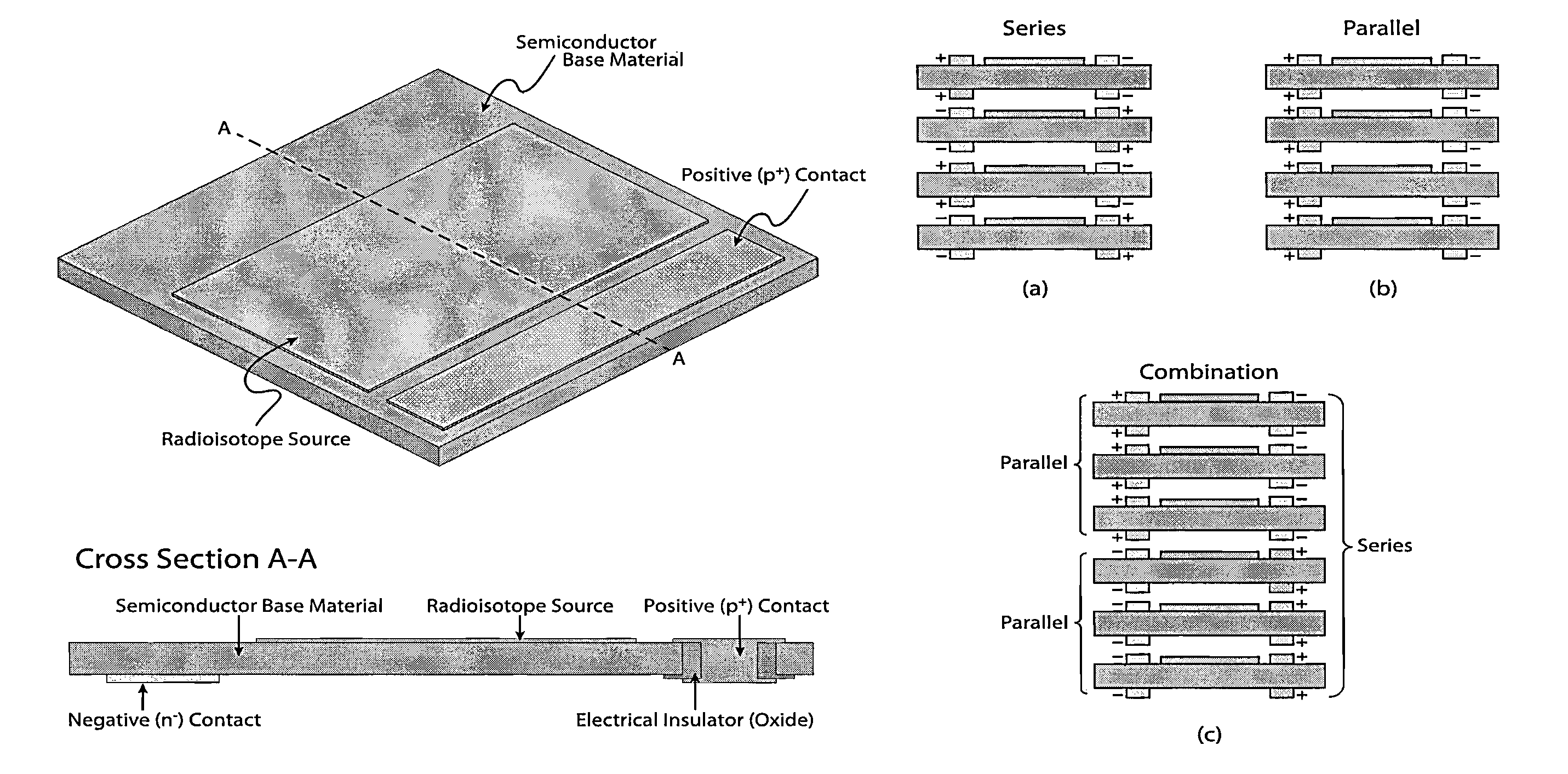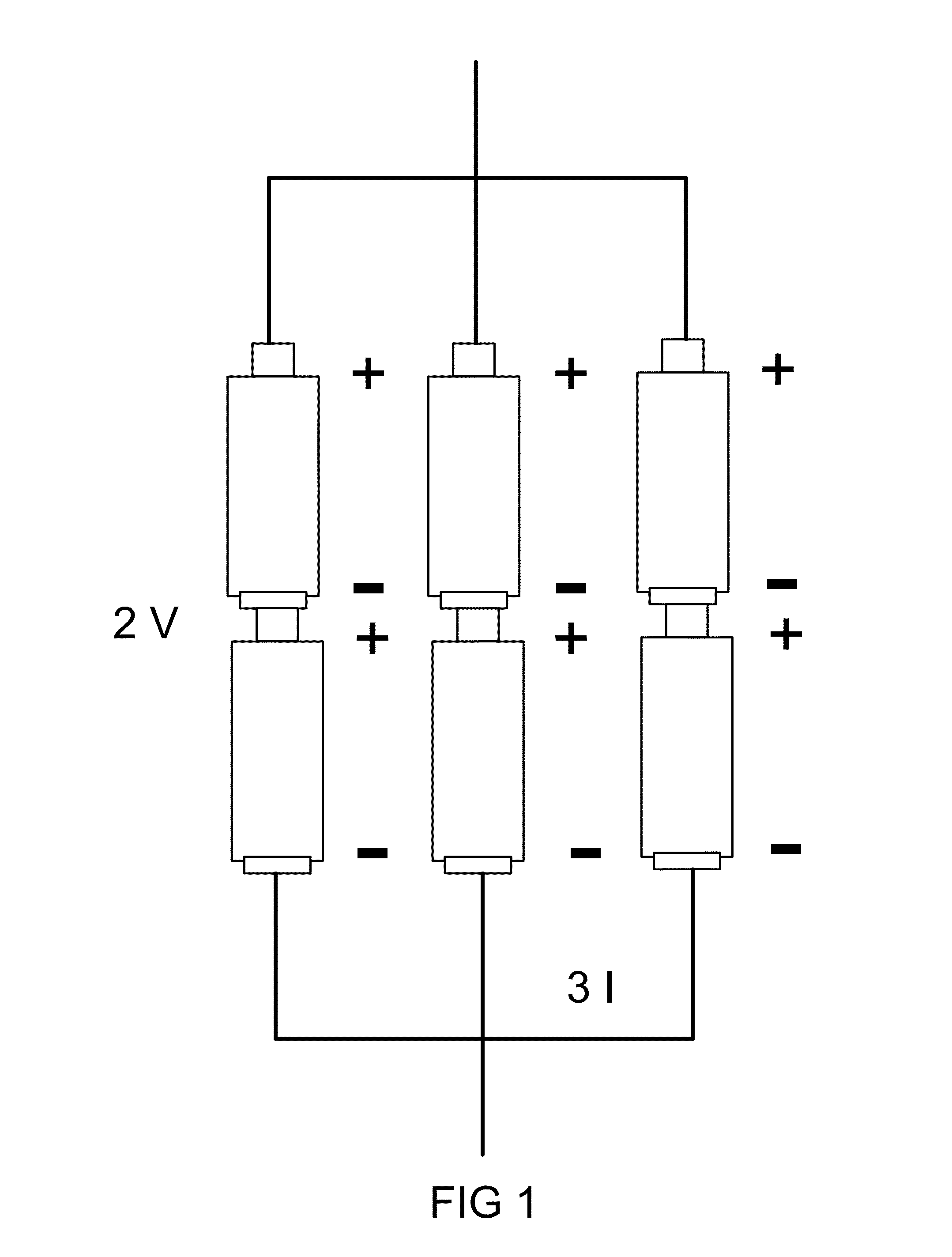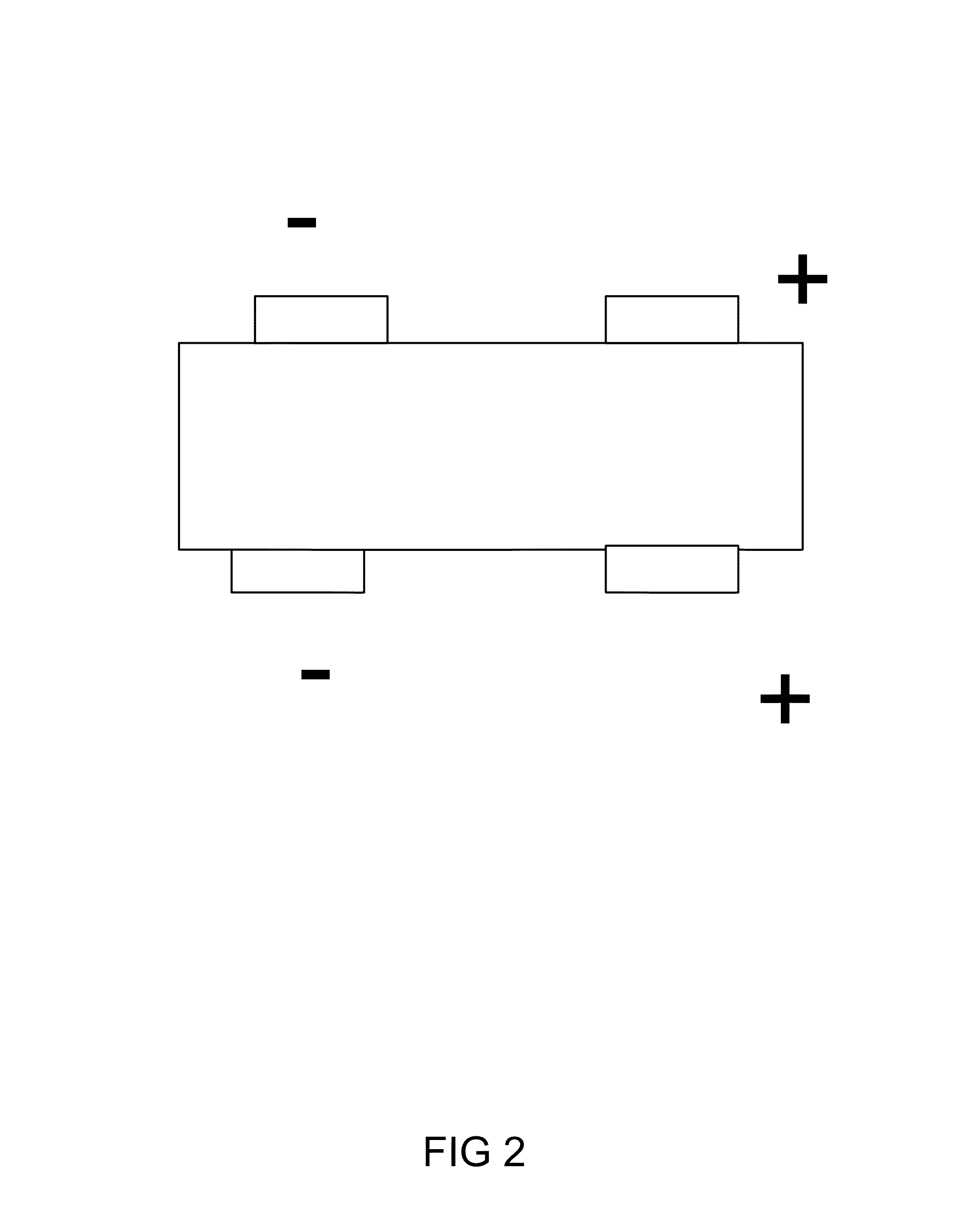Low volumetric density betavoltaic power device
a betavoltaic power device, low volumetric density technology, applied in the field of radioisotope batteries, can solve the problems of short life and achieve the effect of increasing power outpu
- Summary
- Abstract
- Description
- Claims
- Application Information
AI Technical Summary
Benefits of technology
Problems solved by technology
Method used
Image
Examples
Embodiment Construction
[0024]In one embodiment of the invention, a metal tritide is fabricated on the surface of a semiconductor diode convertor, to form a single unit betavoltaic cell. In another embodiment of the invention, the metal can be, but is not limited to, titanium, scandium, yttrium, hafnium, erbium, and zirconium, and the semiconductor used to fabricate the diode convertor can be, but is not limited to, SiC, GaN, GaAs, GaP, InGaAs, and diamond.
[0025]In a further embodiment of the invention, wafer through via hole technology or some other through or around wafer metal, or other conducting material, front to back connecting technology is used to create both positive (+ve) and / or negative (−ve) contacts on the front and / or back of the device cell. This new cell with front and / or backside positive and negative contacts can have at least three different configurations. In one embodiment, the top cell of the stack will have only a positive contact on the top and both negative and positive contacts o...
PUM
 Login to View More
Login to View More Abstract
Description
Claims
Application Information
 Login to View More
Login to View More - R&D
- Intellectual Property
- Life Sciences
- Materials
- Tech Scout
- Unparalleled Data Quality
- Higher Quality Content
- 60% Fewer Hallucinations
Browse by: Latest US Patents, China's latest patents, Technical Efficacy Thesaurus, Application Domain, Technology Topic, Popular Technical Reports.
© 2025 PatSnap. All rights reserved.Legal|Privacy policy|Modern Slavery Act Transparency Statement|Sitemap|About US| Contact US: help@patsnap.com



